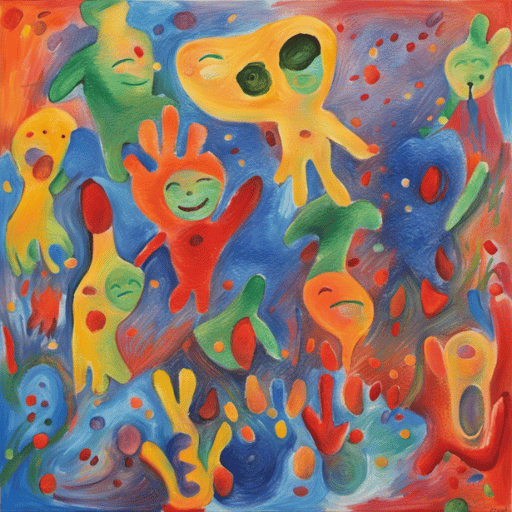A Story Book For Children In India About Dystonia
Once upon a time, in a bustling city in India, there lived a little girl named Maya. Maya loved to dance and twirl around like a graceful peacock. She would often visit the beautiful gardens near her home, where she would watch the colorful butterflies fluttering from flower to flower.
But one day, something strange happened to Maya. She woke up and found that her body didn’t want to move the way she wanted it to. Her arms and legs felt stiff, and her muscles would sometimes twitch and turn in ways she couldn’t control. Maya was confused and scared.
Maya’s parents took her to a wise old doctor named Dr. Raj. He had a kind smile and a gentle voice that made Maya feel safe. Dr. Raj explained to Maya and her parents that she had a condition called Dystonia. He told them that Dystonia was like a little hiccup in the brain that made the body move in unexpected ways.
Dr. Raj assured Maya that she wasn’t alone and that many children in India and around the world had Dystonia too. He explained that Dystonia was like a puzzle, and they would work together to find the right pieces to solve it.
Maya’s parents were determined to help their little girl. They took her to a special therapist named Ravi, who knew all about Dystonia. Ravi taught Maya exercises and stretches to help her muscles relax. He also showed her some special tricks to control her movements.
Maya’s favorite trick was called “The Elephant Walk.” Ravi told her to imagine she was a majestic elephant walking through the colorful streets of Jaipur, with its beautiful palaces and bustling markets. Maya would take big, slow steps, swinging her arms like a gentle elephant trunk. This helped her body feel more in control and made her smile.
Maya’s friends at school were curious about her condition too. She explained to them that her brain sometimes played a little game with her body, making it move differently. Maya’s friends were understanding and supportive. They even came up with a special nickname for her, “Maya the Dancing Elephant,” because she could still dance, even with her Dystonia.
As time went by, Maya’s exercises and tricks started to work wonders. Her body became more flexible, and the twitching and stiffness happened less often. Maya’s confidence grew, and she continued to dance and twirl like the graceful peacock she always was.
One day, Maya and her family went back to the beautiful gardens. Maya looked at the butterflies fluttering around and felt grateful for the journey she had been on. She knew that Dystonia was a part of her, but it didn’t define her. Maya had learned to embrace her uniqueness and turn it into something beautiful.
And so, dear children, remember that even if life throws unexpected challenges your way, you can always find strength and support to overcome them. Just like Maya, you can dance through life, spreading joy and love, no matter what condition you may have. The end

